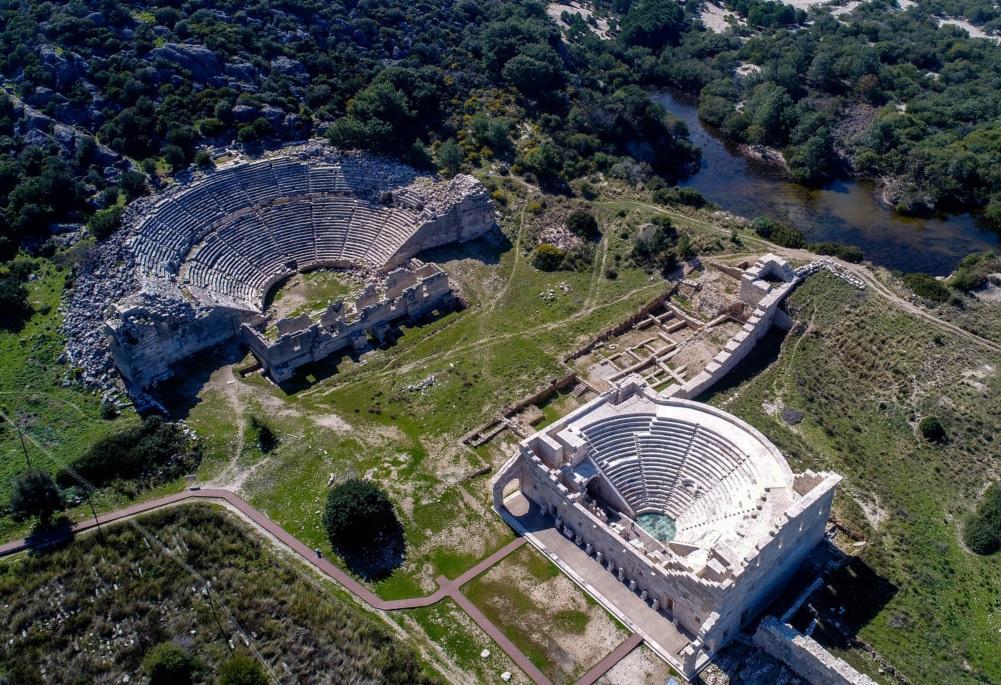Night-time illumination proposed in Antalya
ANTALYA

Tourism professionals in the southern province of Antalya have suggested “lighting” to make museums and ruins more attractive for tourists who don’t want to go out of the hotel in 40-degree heat in summer.
They stated that the number of visitors to museums and ruins would increase if these places were opened after being illuminated in the evening.
Turkey’s tourism center Antalya hosts millions of local and foreign tourists every year. Vacationers in the city enjoy the sea, sand and sun in five-star hotels. The city also draws attention, with many historical ruins that hosted various civilizations in the past.
Those who prefer Antalya, which is home to some 30 ancient cities such as the Lycian, Pamphylian and Pisidian regions, for cultural tourism face difficulties traveling in temperatures exceeding 40 degrees in summer. Tourists, guides and tour operators who serve them keep the visits short in hot weather.
Tourism professionals recently drew attention to this problem and made this proposal in order to mobilize cultural tourism and increase income.
City Council Tourism Working Group President Recep Yavuz discussed the issue with tourism professionals during the Antalya City Council.
Stating that the proposal, which will pave the way for the historical structures to be illuminated and visited in the evenings, was warmly welcomed in the tourism sector, Yavuz said: “Antalya is a city rich in ruins. Since the holiday in Antalya is all-inclusive, holidaymakers do not want to go out. When the temperature is high, it is almost impossible to visit the ruins. Illuminating some of the ruins and opening them to visitors at night will relieve both tour operators and holidaymakers.”
Yavuz stated that the lighting system should be done in a way that will not harm the ancient cities and added that the ancient city of Ephesus and the Egyptian pyramids are illuminated and that there are also many such examples in Europe.
Stating that the illuminated ruins will also attract families with children, Yavuz said: “The costs to visit the ancient city of Ephesus during day and night are different. The areas - a statue or a building - that are exhibited in the ruins have a story. These stories become much more effective as a fairytale with lighting at night. People don’t listen to these stories at 40 degrees.”
Antalya Guides Chamber President Mustafa Yalçın Yalçınkaya also explained that guides had a hard time working in open-air ruins in the summer heat.
Stating that Aspendos and Perge tours are “torture” in summer, Yalçınkaya said, “Open-air tours turn into torture in summer. Guides and guests do not want to stay under the sun for a long time. Guides tell the stories either in the shade or in the bus as much as possible. Due to the hot weather, some holidaymakers do not want to stay there for a long time. I think the lighting system at night will be positive.” He also added that museums and historical sites should also host concerts.
The biggest hesitation about the lighting system is whether the system will damage historical structures. Stating that the work to be done with advanced technology will not harm these places, the experts cited the Egyptian Abu Simbel Temple, the Giza Pyramid, the Vatican, the Louvre Museum and the Ancient City of Ephesus as examples of illuminated museums and ruins that attract attention with the increasing number of visitors, especially at night.
















